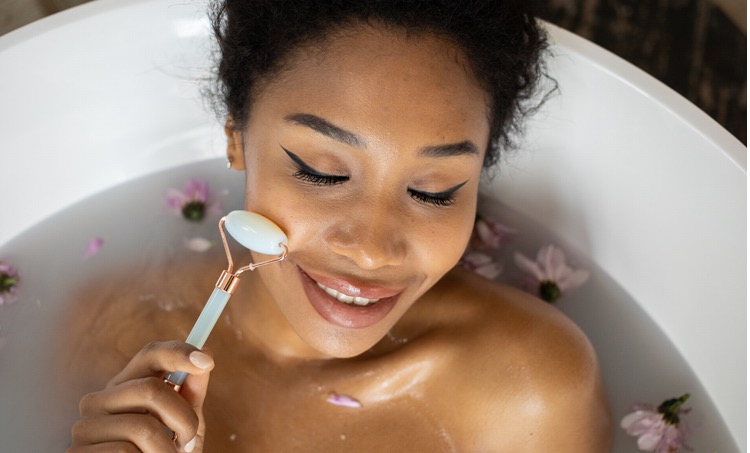
Self-massage is a form of self-care. It is done by using your own hands to apply pressure and manipulate soft tissue to relieve muscle tension, improve circulation, and promote relaxation. You can do this on various parts of the body, including the back, neck, legs, arms, and feet. It is performed using various techniques, such as kneading, friction, tapping and shaking. The beauty of it is that it can be done with or without the use of tools. The goal of this type of massage is to help you reduce muscle pain, improve flexibility, and boost overall well-being.
Benefits of self-massage
It can offer a number of physical and mental health benefits, including:
Relieve muscle tension and pain: By applying pressure to tight and sore muscles, it can relieve tension and reduce pain.
Improve circulation: Massage can increase blood flow to the affected area and bring in oxygen and nutrients to help promote healing.
Reduce stress and promote relaxation: It stimulates the release of endorphins, the body’s natural pain-relieving and mood-enhancing hormones, which helps to reduce stress and promote relaxation.
Boost immune system: Massage stimulates the production of white blood cells, which play a key role in the body’s immune system.
Improve flexibility and range of motion: By allaying muscle tension and increasing circulation, it can help to improve flexibility and range of motion.
Promote better sleep: A great way to relieve tension and promote relaxation, and makes it easier to fall asleep and stay asleep.
Save time and money: You can do this from the comfort of your own home to save time and money.
Self-massage for period pain?
Use this as an effective way to soothe period pain and other menstrual symptoms. Here are some common techniques that can help with period pain:
Abdominal: Place your hands on your lower abdomen and gently massage in a circular motion, increasing the pressure as needed. It’s a good way to alleviate cramping and discomfort.
Hip and lower back: Apply pressure to your hips and lower back using your hands, a foam roller, or a massage ball. This relieves tension in those areas and alleviate menstrual pain.
Foot: Using a tennis ball or massage ball, roll the ball under your feet to relieve tension and improve circulation. This may reduce pain and discomfort in the lower back and legs.
Pelvic floor: Gently massage the muscles of the pelvic floor to relieve cramping and discomfort. Apply pressure to the area with your fingers or using a pelvic floor muscle massager.
It’s important to listen to your body and be gentle with yourself during self-massage. If the pressure is too intense, decrease the pressure or avoid that area altogether. By following these tips and being mindful of your body, you may find an effective way to relieve tension and promote relaxation.
This information should not be used as a substitute for medical treatment. It is not intended to diagnose, treat, cure, or prevent any disease. If you have any medical concerns, it’s always best to consult with a healthcare provider.







